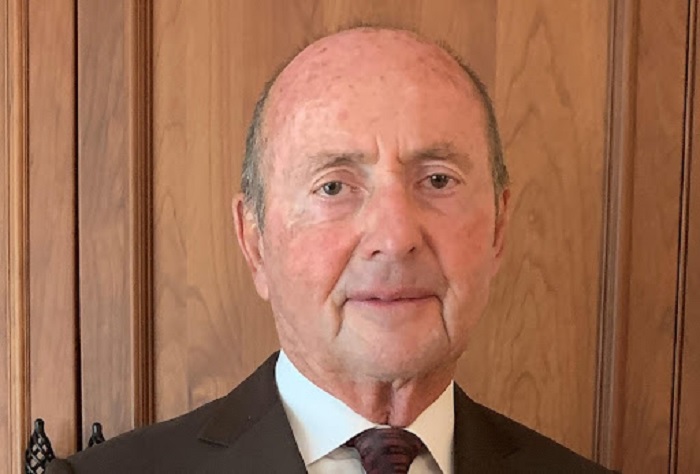Semiconductor manufacturing has witnessed remarkable advancements over the years, with researchers and inventors continually pushing the boundaries of technology. One individual who has played a pivotal role in revolutionizing this field is Roger G. Little, an American physicist, inventor, and entrepreneur. Little’s expertise in radiation effects on semiconductors and his innovative approach to manufacturing technology have had a profound impact, particularly in the development of ion implantation technology and its applications in the production of solar cells.
Ion implantation is a process used in semiconductor manufacturing to introduce dopants into silicon wafers, modifying their electrical properties and enabling the creation of electronic devices with precise characteristics. This technique involves accelerating ions to high energies and bombarding them onto the surface of the target material. The implanted ions penetrate the crystal lattice of the silicon, replacing atoms and creating the desired doping profile.
One of the key advantages of ion implantation is its ability to precisely control the dopant concentration and depth distribution within the semiconductor material. This level of control is crucial for achieving the desired electrical characteristics in various semiconductor devices, such as transistors and diodes. Additionally, ion implantation allows for the incorporation of multiple dopants simultaneously, expanding the range of possible device designs and functionalities.
Shaping the Future: Roger G. Little’s Influence on Ion Implantation in Semiconductors
Roger G. Little recognized the potential of ion implantation technology early on and spearheaded its integration into semiconductor manufacturing processes. His expertise in radiation effects on semiconductors enabled him to envision the application of ion implantation in solar cell production, which led to the development of a self-contained silicon solar cell manufacturing system. By utilizing ion implant technology and electron beam annealing, Little’s team at Spire Corporation achieved significant advancements in the production of high-efficiency solar cells. Ion implantation provided a precise and controlled method for doping the silicon wafers, optimizing their electrical properties. The subsequent electron beam annealing process efficiently repaired any radiation damage caused by the ion implantation, resulting in superior solar cell performance.
The Impact on Solar Cell Production
Little’s pioneering work in solar cell manufacturing technology revolutionized the solar energy industry. Using ion implantation in the fabrication process allowed for producing highly efficient solar cells with improved conversion efficiencies and enhanced durability. Little’s vision extended beyond technological advancements. He established turn-key solar cell manufacturing factories, often in developing countries, providing training to local labor forces and promoting sustainable energy practices globally. These factories were then sold to the host countries or privately owned utility companies, further boosting the adoption of solar energy on a global scale.
Little’s Legacy and Entrepreneurial Ventures
In addition to his contributions to semiconductor manufacturing and solar cell production, Roger G. Little’s entrepreneurial spirit led him to establish several successful ventures. He founded Spire Corporation, which he led as CEO and Chairman of the Board of Directors for over four decades. Under his guidance, Spire transitioned from a small contract research and development firm to a publicly traded company on the Nasdaq exchange, achieving significant market capitalization.
Expanding Technological Horizons
Recognizing the potential of various technologies, Little expanded Spire’s reach into diverse fields, including compound semiconductor materials, medical devices, and optoelectronic instrument development. Through Spire Semiconductor Division, the company manufactured gallium arsenide semiconductor wafers, catering to the optoelectronics industry’s growing demand. Furthermore, Little played a pivotal role in the formation of N2 Biomedical, a spin-off from Spire, which focused on biomedical device processing services.
Photonics at the Forefront – Ventures with Vox Biomedical
Continuing his pursuit of innovation, Little co-founded Vox Biomedical, a company dedicated to developing photonics-related technologies. Vox Biomedical’s groundbreaking work includes the development of a Venturi-based breathalyzer for non-invasive roadside drug testing and the evaluation of technology for the early detection of various viruses and cancers. The company recently received a notice of allowance from the U.S. Patent Office for a rapid and accurate breath diagnostic test for emerging viruses, including SARS-CoV-2.
In a nutshell, Roger G. Little’s contributions to semiconductor manufacturing and solar cell production have left a mark on the industry. His pioneering work in ion implantation technology and its integration into manufacturing has revolutionized the fabrication of high-efficiency solar cells. Furthermore, his entrepreneurial ventures have propelled the adoption of sustainable energy practices and driven innovation in diverse fields. Through his lifelong dedication to innovation and his ability to commercialize new technologies, Little has shaped the landscape of the semiconductor and renewable energy industries. His visionary leadership and commitment to technological advancement continue to inspire future generations of scientists, inventors, and entrepreneurs.


















